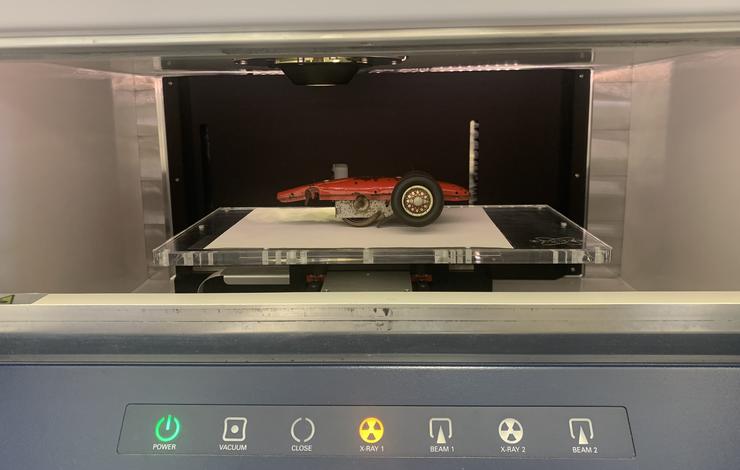28-08-2025

Tinplate toys, produced in Portugal between 1920 and 1960, are more than just playthings: they represent technical innovation and creative ingenuity, and reflect the social and industrial contexts of the time. By reusing materials from the canning industry and reinterpreting foreign models, this industry — particularly in Valongo, the national production centre — created unique pieces that remain undervalued in cultural heritage.
The exploratory TWIN project, approved by the Foundation for Science and Technology (FCT) and led by LIBPhys at NOVA FCT, places the material and technical analysis of these toys at the centre of its research. Through material characterisation and the study of manufacturing processes, the project seeks to understand how material, technical and construction choices influence the durability, conservation and heritage value of tinplate toys. This scientific approach is complemented by historical and sociocultural perspectives, linking the industrial and artisanal past to the contemporary challenges of innovation and design.
The research involves the study of Portuguese toys and other industrialised models, especially German ones, from the collections of the Portuguese Toy Museum, the Caramulo Museum and the Seia Toy Museum. At the same time, it promotes the link between heritage and current design through interdisciplinary research and outreach activities that bring together physicists, engineers, designers, sociologists, historians and museum curators.